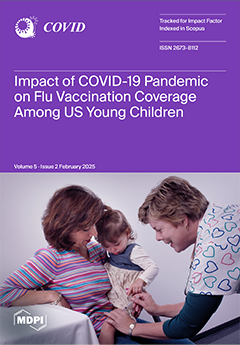This bibliometric review analyzes global research on COVID-19 vaccine side effects, focusing on publication trends, collaborations, and key topic areas. Using VOSviewer and Bibliometrix for data analysis and visualization, this study examines 1353 unique papers indexed in Scopus and Web of Science (2020–2024).
[...] Read more.
This bibliometric review analyzes global research on COVID-19 vaccine side effects, focusing on publication trends, collaborations, and key topic areas. Using VOSviewer and Bibliometrix for data analysis and visualization, this study examines 1353 unique papers indexed in Scopus and Web of Science (2020–2024). The results indicate a significant increase in publications in 2021 and 2022, with the United States, China, and Europe contributing the most. While many studies focused on common side effects, such as headache, fatigue, and injection-site pain, rare but serious adverse events, such as myocarditis, thrombocytopenia, Guillain–Barré syndrome, pericarditis, and thrombosis, were also reported. However, regions with limited research infrastructure, particularly in developing countries, remain underrepresented despite the critical need for vaccine safety studies in these areas. Additionally, journals such as
Vaccines,
Vaccine, and
Human Vaccines and Immunotherapeutics, all ranked Q1, dominate the publication volume, ensuring wide dissemination through open-access availability. This analysis also highlights global collaboration networks, identifying key authors and regions with high levels of co-authorship. Thematic mapping distinguishes niche topics focused on rare and severe side effects from driving topics addressing more common reactions. This review, therefore, underscores the importance of scaling up research efforts in underrepresented regions and strengthening global collaborations to ensure effective pharmacovigilance. Finally, future research should prioritize the long-term, ongoing monitoring of side effects and address disparities in scientific output, particularly in developing countries where vaccine safety data are urgently needed.
Full article





